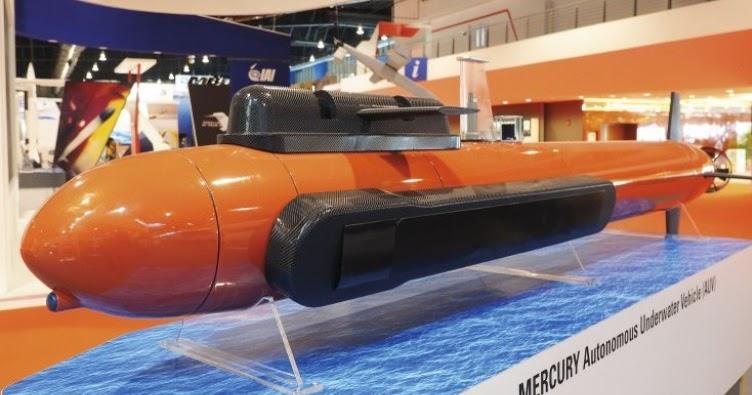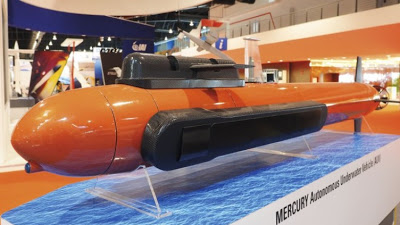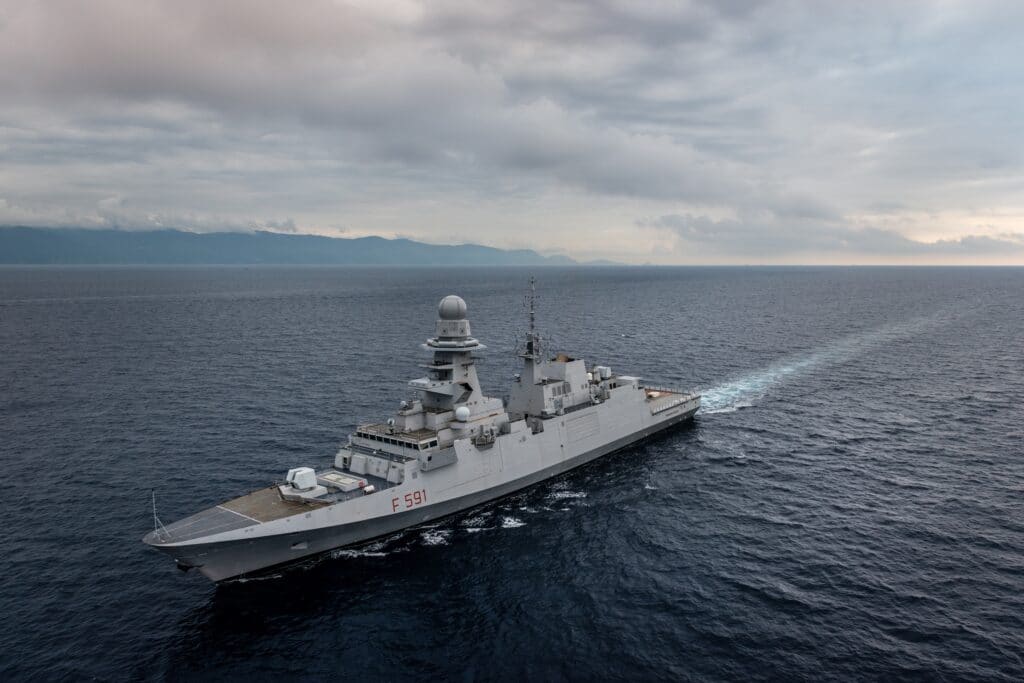18 Mei 2017
ST Electronics launched its fully developed and rebranded Mercury AUV at the IMDEX 2017 exhibition. (photo : Jane’s)
Singapore Technologies (ST) Electronics completed development of its Mercury autonomous underwater vehicle (AUV) in mid-2016, Jane’s has learnt during the IMDEX 2017 exhibition in Singapore.
Formerly known by its development name of Meredith, the 500 kg-class Mercury AUV is a modular, mid-weight AUV that is the result of a joint effort between DSO National Laboratories and ST Electronics to develop an underwater robot capable of providing high-quality seabed data for mine countermeasure (MCM) operations.
“We are deliberately keeping the overall weight under 1 tonne so that it can be deployed easily from shore or any craft of opportunity without complicated and expensive handling equipment,” a company spokesperson told Jane’s.
The example on display at IMDEX measures approximately 5 m in length and comprises the following components: the nose cone, which houses a forward-looking sonar; the configurable payload module that is currently equipped with a Thales synthetic aperture and mine detection imagery sonar (SAMDIS); the mission module that contains the autonomy, communications, navigation, safety, and processing systems; the battery module; and finally the propulsion module where a modified commercial off-the-shelf (COTS) thruster, optimised for efficiency, resides.
According to ST Electronics, another potential payload could be a dual-frequency synthetic aperture sonar. While no details of this particular system were revealed, Jane’s earlier reported that DSO National Laboratories is collaborating with the locally based Microfine Materials Technologies to develop dual-imaging frequency techniques using indigenously developed piezoelectric crystal technology.
The Mercury AUV is outfitted with a global positioning system (GPS), an inertial navigation system (INS), and a Doppler velocity log (DVL). When operating in GPS-denied environments, the vehicle is claimed to be capable of navigating with a margin of error of 1 m for every kilometre travelled.
Jane’s was briefed that the vehicle has an endurance of 14 hours at an average speed of 3 kt when equipped with a 20 kWh lithium-ion battery.
(Jane’s)




